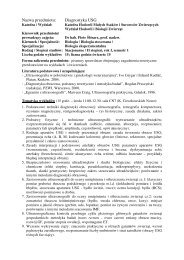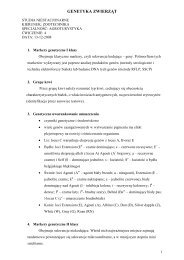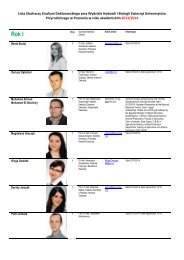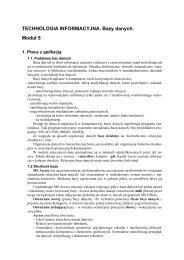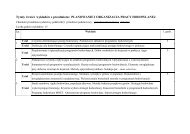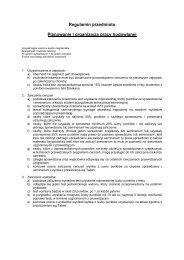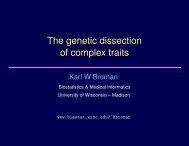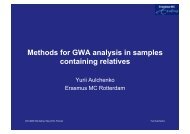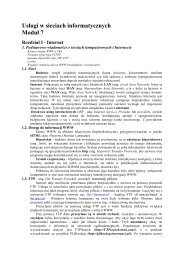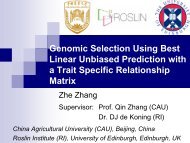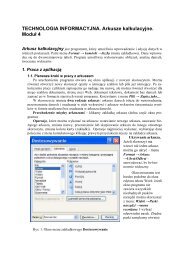The book of abstracts is available. - PoznaÅ
The book of abstracts is available. - PoznaÅ
The book of abstracts is available. - PoznaÅ
You also want an ePaper? Increase the reach of your titles
YUMPU automatically turns print PDFs into web optimized ePapers that Google loves.
14 th QTL-MAS Workshop, Poznań University <strong>of</strong> Life Sciences, Poland 2010Hierarchical likelihood opens a new way <strong>of</strong> estimating genetic values usinggenome-wide dense marker mapsXia Shen 1,2∗ , Lars Rönnegård 2,3 , Örjan Carlborg 1,31<strong>The</strong> Linnaeus Centre for Bioinformatics, Uppsala University, Uppsala, Sweden2Stat<strong>is</strong>tics Group, Dalarna University, Borlänge, Sweden.3Department <strong>of</strong> Animal Breeding and Genetics, Swed<strong>is</strong>h University <strong>of</strong> Agricultural Sciences, Uppsala, Sweden.∗ Presenting author: Xia Shen, email: xia.shen@lcb.uu.seBackground. Genome-wide dense markers can be used to detect genes and estimatepolygenic effects. Among many methods, Bayesian techniques have been shown to bepowerful in genome-wide breeding value estimation and association studies. However,computation <strong>is</strong> known to be intensive in the Bayesian framework, and specifying a suitableprior d<strong>is</strong>tribution for each parameter <strong>is</strong> difficult. We propose to use hierarchical likelihood asan alternative stat<strong>is</strong>tical approach to map genes and estimate genomic breeding values indatasets with dense marker maps, to solve such problems. Using double hierarchicalgeneralized linear models, estimation <strong>of</strong> marker-specific variance <strong>is</strong> unified in one model andestimated using a fast iterative algorithm solely based on weighted least squares.Results. We analyzed the dataset d<strong>is</strong>tributed for the QTL-MAS conference 2010 using doublehierarchical generalized linear models and report breeding value estimates and detected QTL.<strong>The</strong> estimated breeding values obtained using double hierarchical generalized linear modelswere quite similar to those obtained using generalized linear mixed models (Pearsoncorrelation <strong>of</strong> 0.990 for the quantitative trait and 0.987 for the binary trait). Using a smoothedversion <strong>of</strong> the double hierarchical generalized linear model that we propose, QTL were clearlymapped by estimating marker-specific variances.Conclusions. Hierarchical likelihood enables estimating marker-specific variances under anon-Bayesian framework. Double hierarchical generalized linear models can be estimatedusing an iterative algorithm, which greatly shortens the execution time comparing to theBayesian computation. <strong>The</strong>re <strong>is</strong> furthermore no need to specify any priors. Smoothing bydefining spatial correlation reduces no<strong>is</strong>es at zero-effect markers and <strong>is</strong> powerful in localizingQTL. Estimating ep<strong>is</strong>tatic effects <strong>is</strong> also possible by such a unified analys<strong>is</strong> via hierarchicallikelihood.19



